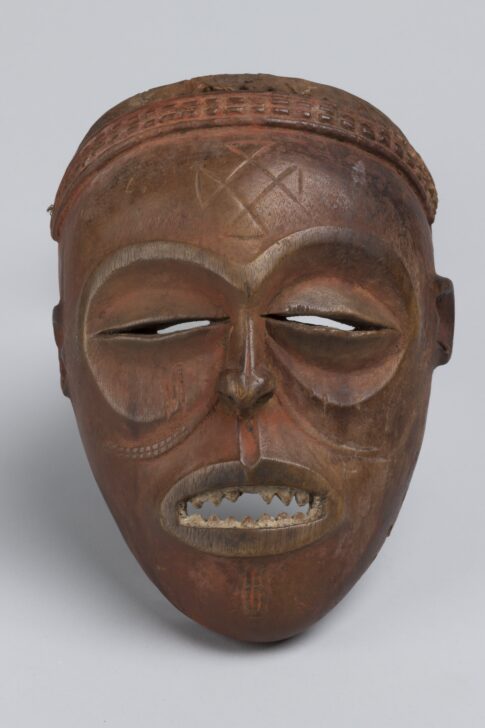Pwo mask
Chokwe

Description
Subject Matter:
Although this mask appears to be missing a coiffure, it still represents pwo or mwana pwo, an honored female ancestor that emphasizes ideal feminine beauty. These ancestral masks, called akishi, including Pwo's male counterpart Cihongo, perform during male and female initiation events. By passing on information about Chokwe principles from one generation to the next, akishi help provide the knowledge boys and girls need to become accomplished members of society. Pwo masks are danced today at important events, but in the recent past were used in boys' initiation (mukanda). Male dancers perform as Pwo, emulating the steps of a woman. The triangular scarifications on the forehead is known as cingelyengelye, based on the form of the cross brought by Portuguese monks during the 17th century.
References:
Jordan, Manuel (ed). 1998. Chokwe!: Art and Initiation Among the Chokwe and Related Peoples. Munich: Prestel Verlag.
Kreamer, Christine, Mary Nooter Roberts, Elizabeth Harney and Allyson Purpura. 2007. Inscribing Meaning: Writing and Graphic Systems in African Art. Washington, D.C.: Smithsonian Institution; Milan: 5 Continents Editions.
LaGamma, Alisa. 2011. Heroic Africans: Legendary Leaders, Iconic Sculptures. New Haven: Yale Press.
Physical Description:
Oval-shaped face mask with slit eye-openings, a mouth with articulated teeth, and scarification on the forehead.
Usage Rights:
If you are interested in using an image for a publication, please visit https://umma.umich.edu/request-image/ for more information and to fill out the online Image Rights and Reproductions Request Form.